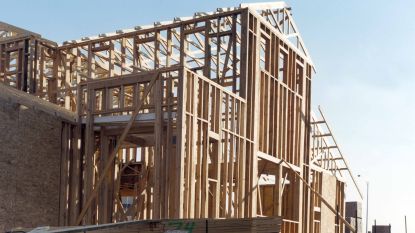The S&P Homebuilders Select Industry Index is not having a good year. It’s already down more than 31% year-to-date through Nov. 9, and the storm clouds on the horizon suggest things aren’t going to get much better for homebuilders in the near term.
According to government figures released in late October, the slump in residential construction in the third quarter cut 1.37 percentage points from gross domestic product, the largest drop since the beginning of the Great Recession in late 2007.
Another concerning stat for homebuilders in Q3 was the drop in single-family home construction. On an annualized basis, there was a 36.6% decline in home construction from July through September.
Subscribe to Kiplinger’s Personal Finance Be a smarter, better informed investor.
Save up to 74%
Sign up for Kiplinger’s Free E-Newsletters Profit and prosper with the best of Kiplinger’s expert advice on investing, taxes, retirement, personal finance and more – straight to your e-mail.
Profit and prosper with the best of Kiplinger’s expert advice – straight to your e-mail.
If homebuilders aren’t putting up homes, they’re not making money.
Whether we’re talking about new-home construction or resales, the entire single-family home industry is suffering under the double whammy of high inflation and rising interest rates.
Moody’s Analytics recently did a deep dive on 322 regional housing markets throughout the U.S. The economic research firm expects all of these markets will experience a decline in price from peak to trough, with approximately 61% projected to see home prices drop by 10%.
The research predicts the biggest peak-to-trough decline to be 26.0% in Morristown, Tennessee. Another city in the Volunteer State is also in the top 10: Nashville, where home prices are expected to fall 23.3%.
While the price correction happening at the moment in the resale market will be good for overall housing affordability, it doesn’t necessarily bode well for new construction homebuilders.
Why? They set their prices based on what the market’s willing to bear.
If Joe Consumer can get a four-bedroom resale for $300,000, down from $400,000 a year ago, it’s unlikely given rising interest rates – the current 30-year fixed mortgage is 7.23%, up from 5.46% in mid-August – Joe is going to spring for a new $400,000 home, no matter how many amenities it comes with.
As a result, you’re starting to hear many more warnings from homebuilders that 2023 will not be a fun year for the industry.
In September, housing starts were down 19% year-over-year. Plus, PulteGroup (PHM (opens in new tab)) said its cancellation rate was 24% in the third quarter – up from 10% in the year prior.
This is a statistic that’s not unique to Pulte. It’s happening across the industry.
“Running a homebuilding company during this part of an economic cycle is complicated,” said Ryan Marshall, CEO of PulteGroup, in the company’s Q3 earnings call. “The softer demand conditions that we experienced in the third quarter continued into October and have likely gotten even more challenging with mortgage rates now pushing 7%.”
This outlook was echoed by Taylor Morrison (TMHC (opens in new tab)) CEO Sheryl Palmer during the homebuilder’s own Q3 conference call.
“Generally speaking, higher mortgage rates and uncertainties surrounding the economy has pushed many potential homebuyers and all consumer cohorts to the sidelines, and we continue to believe it will take some time for the market to find its new equilibrium as interest rates have most recently reached as high as 8%,” Palmer stated in late October.
What is clear is that only the most financially sound homebuilders will come out of this correction in good shape, ready to take on the next bull market in new home sales.
According to S&P Global Market Intelligence, 13 homebuilders in the S&P 1500 have market caps greater than $1 billion. Seven of those have cash and short-term investments on their balance sheets equal to 10% or more of their market cap.
Only two – NVR (NVR (opens in new tab)) and Cavco Industries (CVCO (opens in new tab)) – have net cash on their balance sheets as of the most recent quarter. As a result, they’ll likely be the most prepared to weather the coming storm.
